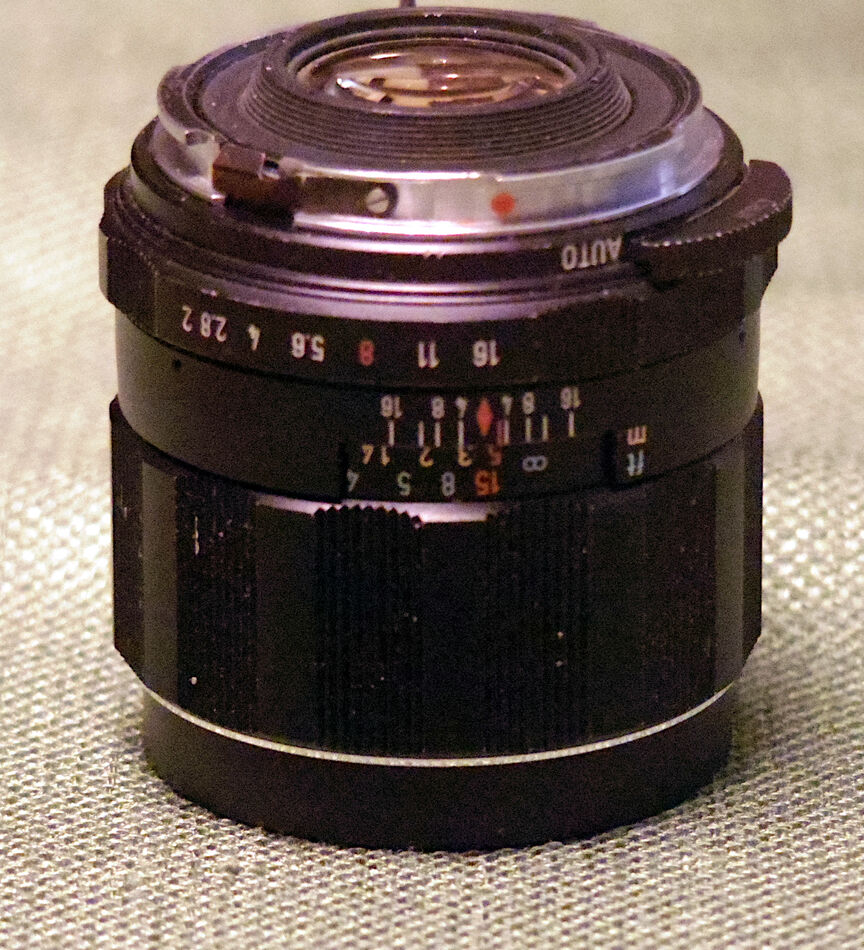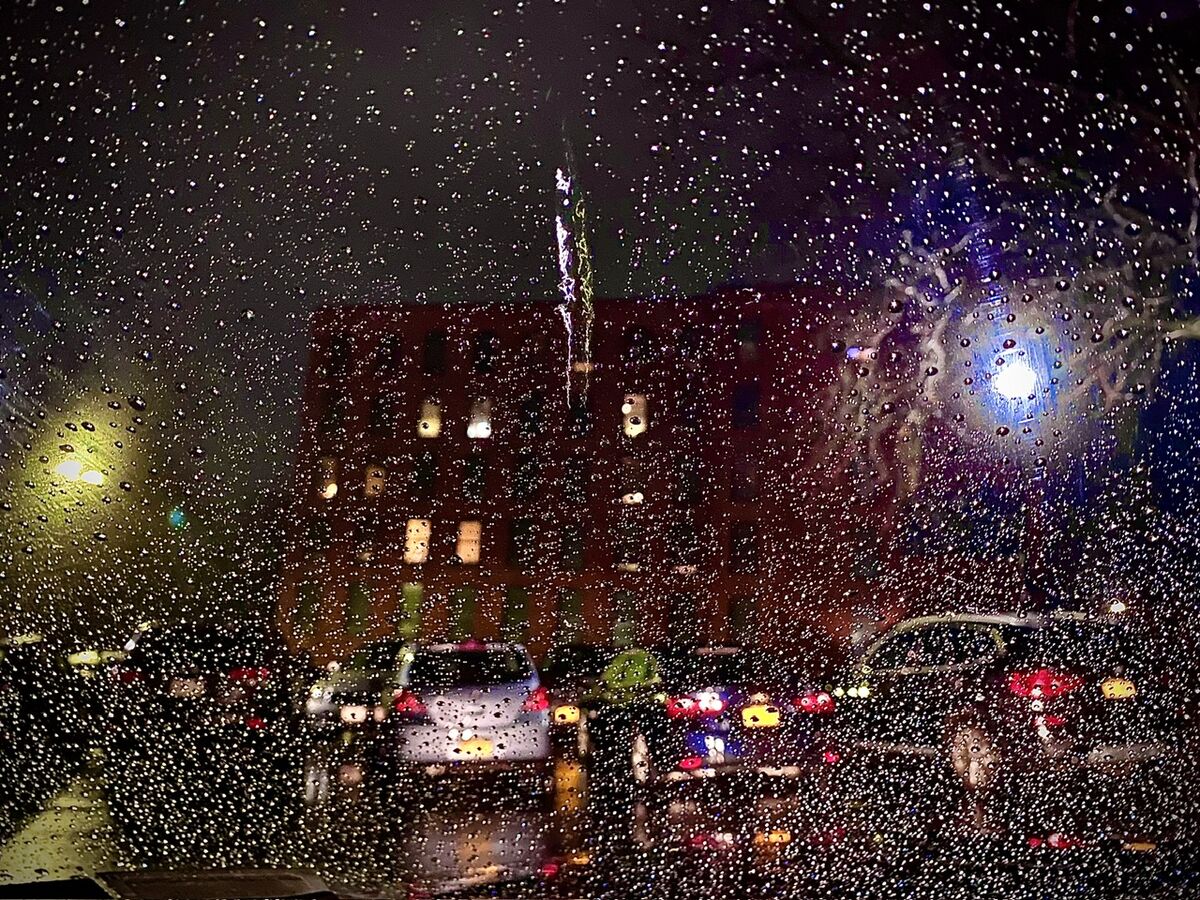Bryan Peterson vs. Diffraction
Dec 11, 2023 18:57:00 #
Light is obedient to the Laws of Physics. They are "laws", not recommendations or just good ideas.
Waves of light flow much like water through a hose nozzle. When it is wide open, the flow is laminar. When the nozzle is closed more and more, the flow of water sprays as the orifice on the nozzle constricts. Light passing through an orifice (aperture) performs the same way. The spreading of the waves of light leaving the orifice results in the softness of edges and detail.
Waves of light flow much like water through a hose nozzle. When it is wide open, the flow is laminar. When the nozzle is closed more and more, the flow of water sprays as the orifice on the nozzle constricts. Light passing through an orifice (aperture) performs the same way. The spreading of the waves of light leaving the orifice results in the softness of edges and detail.
Dec 11, 2023 19:05:21 #
Rab-Eye wrote:
Actually, I just reached the part in this latest edition of the book where he addresses the issue. His opinion is not to worry about it.
I have never had a problem with diffraction with any lens with film or digital and I have always shot at the smallest aperture possible .
I agree don't worry about it!! if it happen don't do what you did when it happened again!!
Dec 11, 2023 20:03:15 #
I’ll just opine that lots of the commenters that ignore diffraction are the first to advocate spending max $ or “good glass” to get that last 10% in sharpness and contrast, only to lose it shooting at f22 instead of f11 when as Bill B demonstrated, a DOF calculator would show that often the small increase in DOF is not necessary or noticeable.
If you’re going to spend 2-5x the cost of a mediocre lens, why not get the best out of it? It’s easy to say that 10% isn’t noticeable, but then there’s the 10% higher noise from the 4x higher ISO required and another 5-10% from ignoring other basic principals, and in the end, you end up with a mediocre instead of a tack sharp image and then justify it by stating that “there’s too much emphasis on sharpness” or “quit worrying about the details, photography should be fun” or “looks good enough to me - you can’t see the difference”.
Producing first class work/perfection, whether it’s photography, music, art, woodworking, or any sport, is all about attention to detail, and details add up.
If you’re going to spend 2-5x the cost of a mediocre lens, why not get the best out of it? It’s easy to say that 10% isn’t noticeable, but then there’s the 10% higher noise from the 4x higher ISO required and another 5-10% from ignoring other basic principals, and in the end, you end up with a mediocre instead of a tack sharp image and then justify it by stating that “there’s too much emphasis on sharpness” or “quit worrying about the details, photography should be fun” or “looks good enough to me - you can’t see the difference”.
Producing first class work/perfection, whether it’s photography, music, art, woodworking, or any sport, is all about attention to detail, and details add up.
Dec 11, 2023 20:26:03 #
Orphoto
Loc: Oregon
I agree with Burk & TriX.
There are a significant number here with mediocre lenses, cameras at lesser resolutions who call out repeatedly, problem? what problem. I don't see any issues.
Typically those with higher resolution bodies, better lenses and an eye for detail acknowledge the physics.
Choose your camp depending on how picky you are about details.
But....if a particular image demands greater depth of field, go ahead and make the compromise.
There are a significant number here with mediocre lenses, cameras at lesser resolutions who call out repeatedly, problem? what problem. I don't see any issues.
Typically those with higher resolution bodies, better lenses and an eye for detail acknowledge the physics.
Choose your camp depending on how picky you are about details.
But....if a particular image demands greater depth of field, go ahead and make the compromise.
Dec 11, 2023 22:59:56 #
larryepage
Loc: North Texas area
These last few posts talk all around, but conveniently avoid facing the real truth about the technic of photography. It's exactly what my posts have tried but apparently failed to convey. It's apparently what the training and preparation of just about every photographer here has failed to train and prepare. So I'll try one more time.
As a craft, photography is a borderline miracle. It's not as difficult now as it was early in the 19th century, but the fact that it can be done at all is a miraculous thing. Come on...capturing a person or scene or feat? That's miraculous.
But the process that governs this miracle is bounded on every side by constraints.
Some minimum amount of light is needed.
Some maximum amount of movement is tolerable.
A maximum distance to the subject must be managed.
A maximum amount of haze in the air is tolerable.
I can't shoot through heavy rain.
I can't shoot through blowing dust or sand.
Wrong color light messes up my pictures.
It's hard to make a perfect lens.
All of these constraints must be balanced against each other when taking a picture. Many situations, of course, are set so deep in the middle of everything that the constraints are far, far away. But when one is working on the edge, things can be much different. Birds flying, stars shining, darkness prevailing, sun piercing, animals hiding...that's when things get a little tougher. That's when we have to know how to manage the constraints. That starts with deciding what matters most and making choices that honor it. That's when a formulaic approach breaks down and decisions must be made based on a deeper understanding of basicprinciples (and the other constraints). That's when diffraction may--or may not--become important.
As a craft, photography is a borderline miracle. It's not as difficult now as it was early in the 19th century, but the fact that it can be done at all is a miraculous thing. Come on...capturing a person or scene or feat? That's miraculous.
But the process that governs this miracle is bounded on every side by constraints.
Some minimum amount of light is needed.
Some maximum amount of movement is tolerable.
A maximum distance to the subject must be managed.
A maximum amount of haze in the air is tolerable.
I can't shoot through heavy rain.
I can't shoot through blowing dust or sand.
Wrong color light messes up my pictures.
It's hard to make a perfect lens.
All of these constraints must be balanced against each other when taking a picture. Many situations, of course, are set so deep in the middle of everything that the constraints are far, far away. But when one is working on the edge, things can be much different. Birds flying, stars shining, darkness prevailing, sun piercing, animals hiding...that's when things get a little tougher. That's when we have to know how to manage the constraints. That starts with deciding what matters most and making choices that honor it. That's when a formulaic approach breaks down and decisions must be made based on a deeper understanding of basicprinciples (and the other constraints). That's when diffraction may--or may not--become important.
Dec 11, 2023 23:32:00 #
R.G. wrote:
Aha!! I think we inadvertently have the answer. The significance of diffraction depends on how closely we observe it. 

Brilliant!
Dec 12, 2023 05:48:58 #
larryepage wrote:
br As a craft, photography is a borderline miracl... (show quote)
The edge is really only just the beginning.
Dec 12, 2023 08:17:49 #
Rab-Eye wrote:
I'm revisiting Bryan Peterson's classic Understanding Exposure, and it reminded me how often he shoots at f/11-22. I obviously can't ask him why diffraction does not seem to be a problem for him, so I am asking here. Is diffraction at small apertures overblown as an issue? Is it more of a problem under certain conditions and less so under other conditions? A confused mind wants clarification.
Thanks,
Ben
Thanks,
Ben
Print size and viewing distance and human eyesight limitations will always be the main factors regarding diffraction. Diffraction is always there. If you are looking at an 8x10 at arms length you will clearly see the difference between images taken at F8 and F22. However if you look at a print enlarged to 40x60 or bigger even F22 will look pretty sharp. There are other concerns like subject matter, image contrast etc.
Dec 12, 2023 10:37:30 #
TriX wrote:
I’ll just opine that lots of the commenters that i... (show quote)
YES! This is really important. The point is to reserve non-optimal settings for the times they are absolutely necessary, rather than to use them as a rule of thumb.
There are too many "rules of thumb" in photography. People throw thousands of dollars at cameras and lenses, then make all sorts of assumptions about their performance without realizing that MOST of that great performance happens because of what's going on SIX INCHES BEHIND the camera. Even the best lenses in the world can perform in a mediocre manner if used with unnecessary settings.
> Read The *Fine* Manual.
> Trust, but verify performance with controlled real-world tests (Place emphasis on the control part!)
> Apply and practice what you've read and tested.
Dec 12, 2023 16:29:32 #
CHG_CANON wrote:
There are easy two experiments you can perform to ... (show quote)
Right. Canon 90D, 180mm Macro lens, aperture priority, ISO 100, King Oscar mackerel fillets in olive oil. Starting with the widest aperture, the insets are crops at 100%.
images coming...
Dec 12, 2023 19:31:53 #
Dec 12, 2023 19:39:01 #
flyboy61
Loc: The Great American Desert
burkphoto wrote:
Using DOFC will always show the hyperfocal distance. However, setting it is difficult with some modern lenses, since they don’t include a distance scale.

Dec 12, 2023 19:44:10 #
flyboy61
Loc: The Great American Desert
Rab-Eye wrote:
Actually, I just reached the part in this latest edition of the book where he addresses the issue. His opinion is not to worry about it.

 GOOD info! He has made that assertion in at least two of his books, and nobody yet has had the "facts" to gainsay his (documented) statements. But still, the everlasting wisdom of "common knowledge" keeps the discussion going on...and on...
GOOD info! He has made that assertion in at least two of his books, and nobody yet has had the "facts" to gainsay his (documented) statements. But still, the everlasting wisdom of "common knowledge" keeps the discussion going on...and on...Seems to me people should enjoy this magical pastime or career, and not get too worked up about the trivia!
Dec 12, 2023 19:53:09 #
burkphoto wrote:
Using DOFC will always show the hyperfocal distance. However, setting it is difficult with some modern lenses, since they don’t include a distance scale.
That’s why I use ‘film lenses’ that do have distance and hyperfocal distances.

Dec 12, 2023 20:08:43 #
rehess wrote:
That’s why I use ‘film lenses’ that do have distance and hyperfocal distances.
My old 1960s to 1980s Nikkors are not nearly as sharp on my camera as my native Lumix lenses... But they do have those markings.
If you want to reply, then register here. Registration is free and your account is created instantly, so you can post right away.











